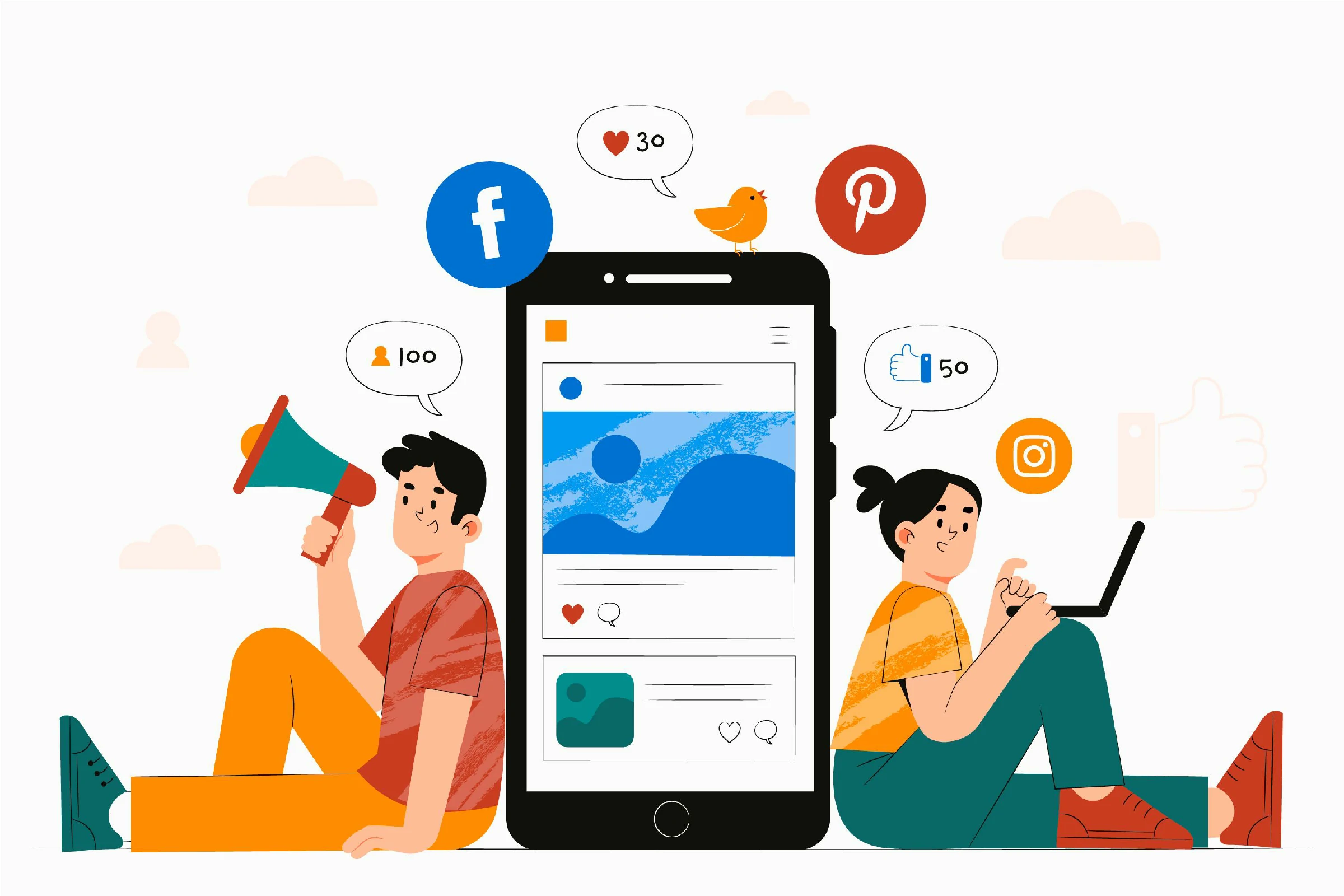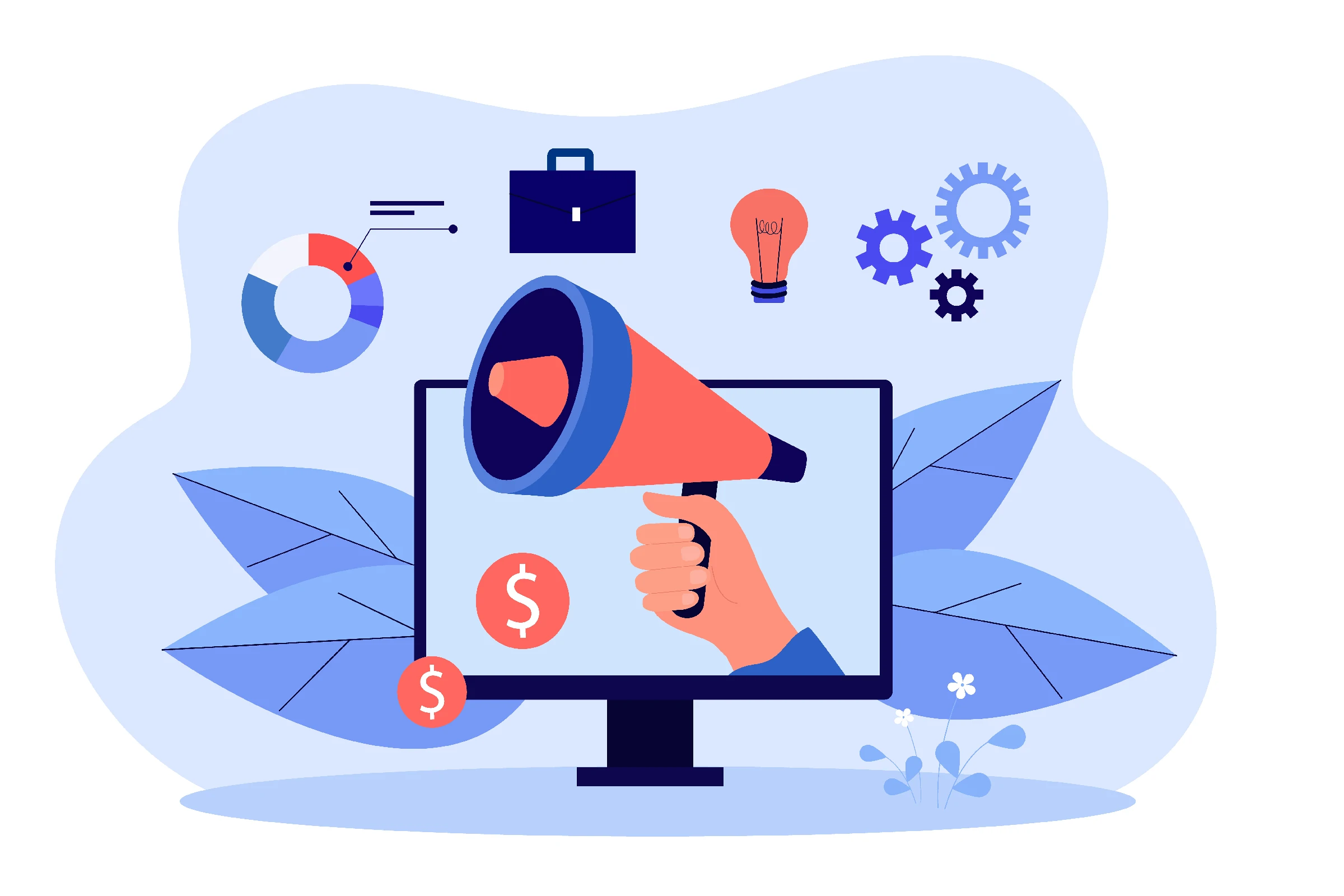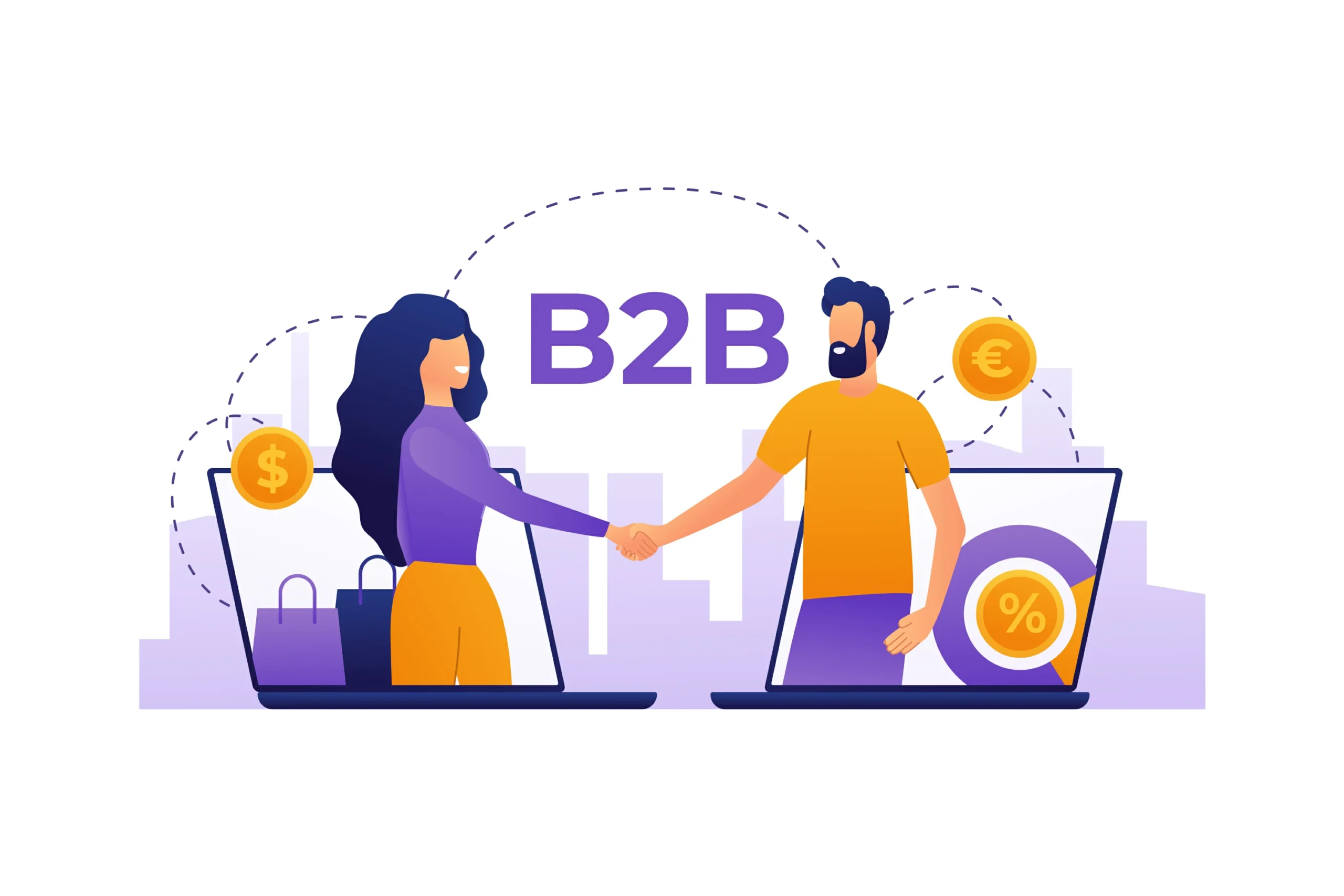The debate between sales and marketing has existed since the first businesses began — which one matters more?
The truth is that sales and marketing are two sides of the same growth engine. One cannot thrive without the other, but each plays a distinct role at different stages of the customer journey.
In this guide, we’ll explore:
What marketing and sales really mean (beyond the textbook definition)
How each contributes to business growth
When one becomes more important than the other
Their types, channels, and methods
And how they can work together effectively
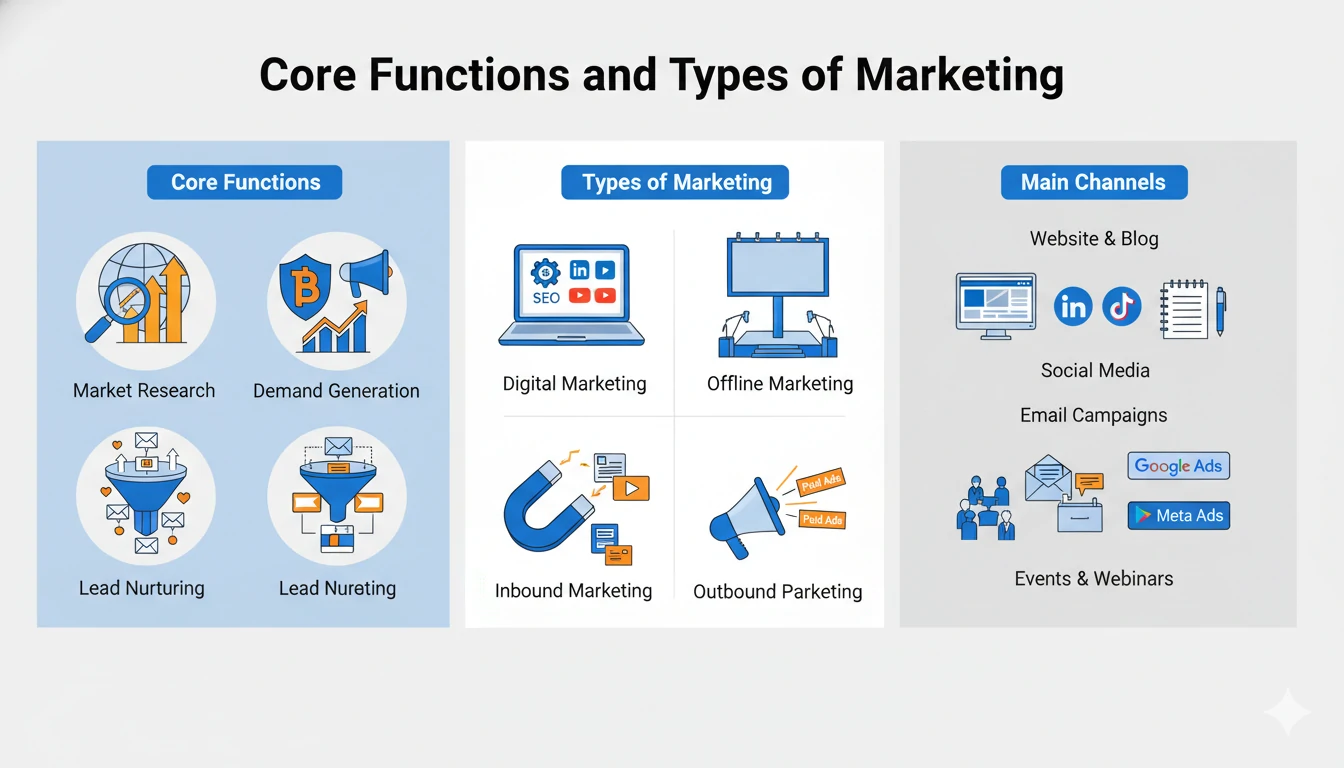
What Is Marketing?
Definition
Marketing is the strategic process of attracting, educating, and nurturing potential customers before they’re ready to buy.
It’s about creating awareness and demand through content, communication, and experiences that connect emotionally and logically with the audience.
Goal
To make selling easier — by building brand visibility, generating qualified leads, and positioning the product as the right solution.
Core Functions
Market Research: Understanding customer needs, competitors, and market trends.
Branding: Building identity, voice, and value perception.
Demand Generation: Creating interest through content, campaigns, and advertising.
Lead Nurturing: Educating and engaging prospects until they’re ready to talk to sales.
Types of Marketing
Digital Marketing: SEO, content marketing, email, social media, and paid ads.
Offline Marketing: Events, trade shows, TV/radio ads, and print materials.
Inbound Marketing: Attracting customers with helpful content (blogs, guides, webinars).
Outbound Marketing: Reaching out through paid ads, cold emails, and calls.
Main Channels
Website & Blog (SEO)
Social Media (LinkedIn, Instagram, TikTok, YouTube)
Email Campaigns
Online Advertising (Google Ads, Meta Ads)
Events & Webinars
Influencer & Partnership Marketing
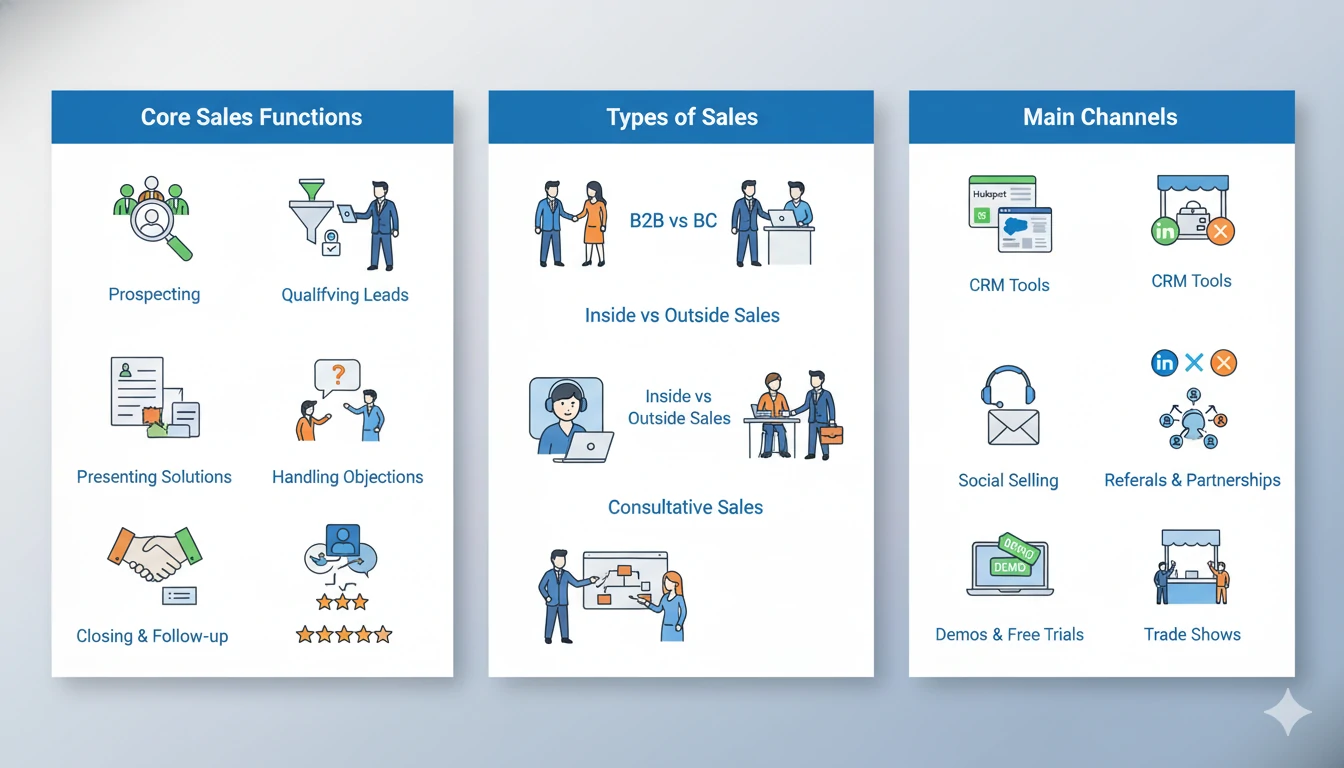
What Is Sales?
Definition
Sales is the direct process of converting potential leads into paying customers.
It involves building relationships, understanding client needs, negotiating, and closing deals.
Goal
To generate revenue and maintain long-term customer relationships through personalized communication and value delivery.
Core Functions
Prospecting: Identifying potential buyers (leads) from marketing or self-sourced.
Qualifying Leads: Assessing who’s ready and who fits your product best.
Presenting Solutions: Showing how your product solves their problem.
Handling Objections: Addressing doubts or concerns before closing the deal.
Closing & Follow-up: Securing the sale and ensuring customer satisfaction.
Types of Sales
B2B Sales: Business-to-business transactions — longer cycles, relationship-driven.
B2C Sales: Business-to-consumer — faster decisions, emotional influence.
Inside Sales: Done remotely via calls, video meetings, or CRM systems.
Outside Sales: Field-based, face-to-face meetings.
Consultative Sales: Focused on solving problems, not just selling products.
Main Channels
CRM Tools (HubSpot, Salesforce)
Cold Calls & Emails
Social Selling (LinkedIn, X, WhatsApp Business)
Referrals & Partnerships
Demos and Free Trials
Trade Shows & Networking Events
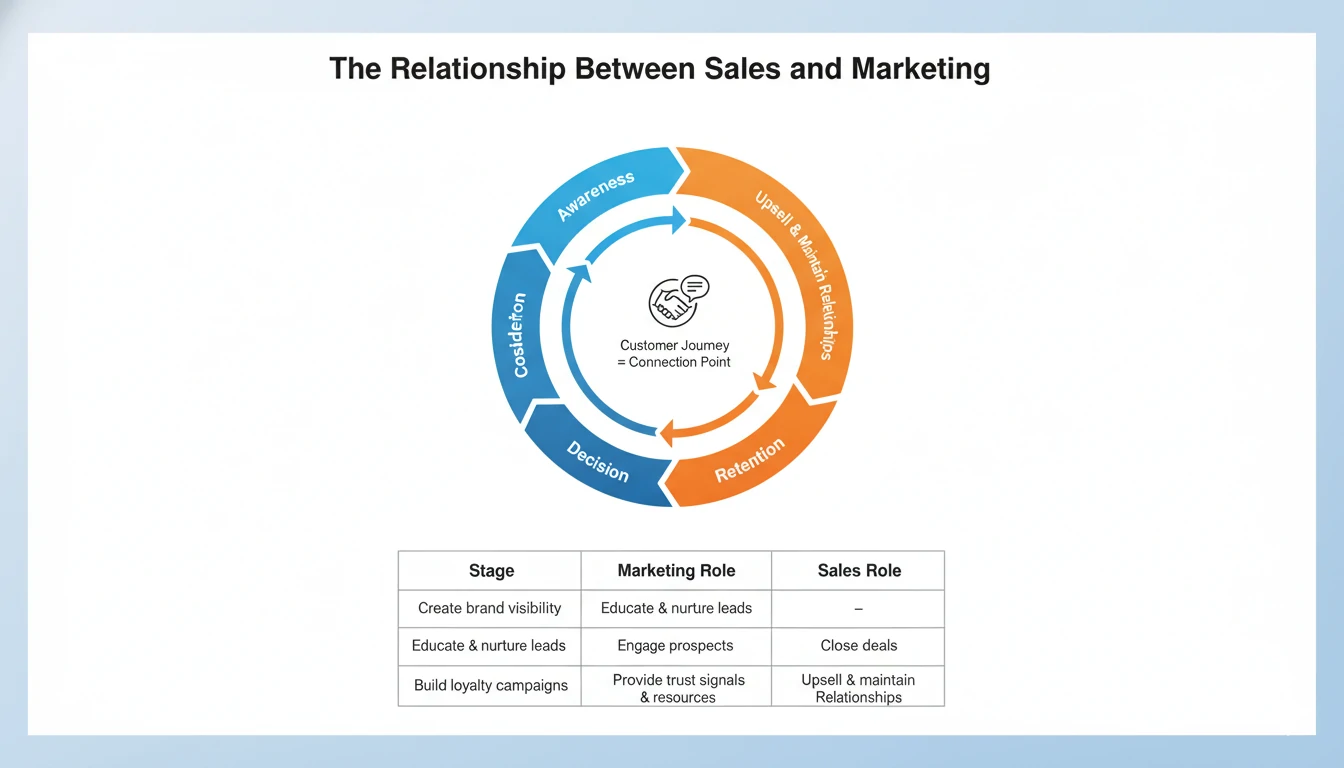
3. The Relationship Between Sales and Marketing
Imagine your business as a wheel:
Marketing is the momentum that spins it — it brings awareness and interest.
Sales is the traction that moves it forward — it turns interest into income.
Both departments are linked by one critical element: the customer journey.
| Stage | Marketing Role | Sales Role |
|---|---|---|
| Awareness | Create brand visibility | — |
| Consideration | Educate & nurture leads | Engage prospects |
| Decision | Provide trust signals & resources | Close deals |
| Retention | Build loyalty campaigns | Upsell & maintain relationships |
When aligned, marketing feeds sales with warm, educated leads — and sales provides real-world feedback that sharpens marketing strategies.
When Marketing Is More Important
Marketing takes the lead in:
New product launches — when awareness is the priority.
Brand building — to earn trust in competitive markets.
Early-stage startups — to validate demand and attract first leads.
Long sales cycles (B2B SaaS, industrial) — where education matters more than instant conversion.
💡 Example: A new tech company invests in SEO, webinars, and LinkedIn campaigns to build authority before its sales team starts outreach.
When Sales Is More Important
Sales dominates when:
Leads are already aware and ready to buy.
Complex deals require personal consultation or negotiation.
Enterprise clients need human relationships and trust.
Retention and upselling are the main growth drivers.
💡 Example: In real estate or software licensing, the salesperson’s expertise and empathy close million-dollar contracts that marketing alone could never secure.

What Happens in Each Function (Step-by-Step)
Marketing Workflow
Research market & audience needs.
Develop content strategy (blogs, videos, guides).
Launch campaigns across channels.
Capture leads via forms, CTAs, and landing pages.
Nurture leads with email or retargeting.
Handoff qualified leads to sales.
Sales Workflow
Receive leads (from marketing or outbound).
Qualify them through calls or emails.
Present demo or proposal.
Negotiate and handle objections.
Close the deal and record in CRM.
Follow up for renewals or referrals.
The Importance of Alignment: “Smarketing”
In 2025, successful companies merge sales and marketing into a single ecosystem called “Smarketing.”
Key Features
Shared goals (revenue, not just leads).
Real-time CRM integration.
Feedback loops — sales tells marketing which leads convert best.
Consistent brand message across every stage.
📈 According to HubSpot, companies with aligned sales and marketing see 208% higher revenue growth than those with siloed teams.
Which Is More Important, Then?
The short answer: Neither alone.
Their importance shifts depending on your business stage and strategy.
| Business Stage | Priority Function | Why |
|---|---|---|
| Startup | Marketing | Build awareness and generate leads |
| Growth | Sales | Convert growing demand into revenue |
| Maturity | Both (Alignment) | Sustain brand & expand relationships |
| Retention | Sales + Marketing | Nurture clients and upsell |
Ultimately, marketing creates potential, and sales captures it.
The true power lies in integration, not competition.
How to Build a Winning Sales–Marketing Partnership
Set Shared KPIs: Both teams should focus on revenue, not vanity metrics.
Use Unified Tools: Shared CRMs and dashboards (HubSpot, Salesforce).
Create Ideal Customer Profiles (ICP): Define together who you’re targeting.
Collaborate on Content: Sales provides customer questions → marketing creates materials to answer them.
Meet Weekly: Discuss pipeline, lead quality, and campaign impact.
Celebrate Wins Together: Every closed deal starts with great marketing.
Final Takeaway
“Marketing opens the door. Sales walks through it.”
Without marketing, nobody knows you exist.
Without sales, awareness never turns into revenue.
The most successful organizations in 2025 treat both as partners in growth — working in harmony to build trust, generate value, and create lasting customer relationships.
Quick Summary Table
| Aspect | Marketing | Sales |
|---|---|---|
| Purpose | Create awareness & generate leads | Convert leads into customers |
| Focus | Long-term brand & trust | Short-term revenue & relationships |
| Approach | Educational, creative | Consultative, persuasive |
| Channels | SEO, email, social, ads | CRM, calls, meetings, demos |
| Measurement | Leads, reach, engagement | Deals closed, revenue, retention |
| Best When | Launching, building authority | Negotiating, closing complex deals |
Recommended Reading & References
HubSpot: Sales vs. Marketing — What’s the Difference?
https://blog.hubspot.com/sales/sales-vs-marketingForbes: The Relationship Between Sales and Marketing in 2025
Harvard Business Review: Bridging the Gap Between Marketing and Sales
Google: Creating Helpful, Reliable, People-First Content (E-E-A-T)
Marketing focuses on attracting and nurturing potential customers through brand awareness and content, while sales focuses on converting those leads into paying customers through direct communication and deal-closing.
Neither is more important than the other — both are essential.
Marketing builds awareness and generates demand; sales converts that demand into revenue. Their success depends on how well they work together.
Marketing is more critical in the early stages of a business or product launch, when the goal is to build visibility, brand trust, and attract leads before direct selling begins.
Sales takes the lead when leads are ready to buy, or when complex deals require personal relationships, negotiation, and trust-building — especially in B2B or enterprise environments.
Digital marketing: SEO, content, email, social media, paid ads.
Offline marketing: Events, print ads, trade shows.
Inbound marketing: Attracts customers through valuable content.
Outbound marketing: Reaches out directly through calls or ads.
B2B sales (business-to-business)
B2C sales (business-to-consumer)
Inside sales (remote)
Outside sales (field-based)
Consultative sales (solution-oriented)


